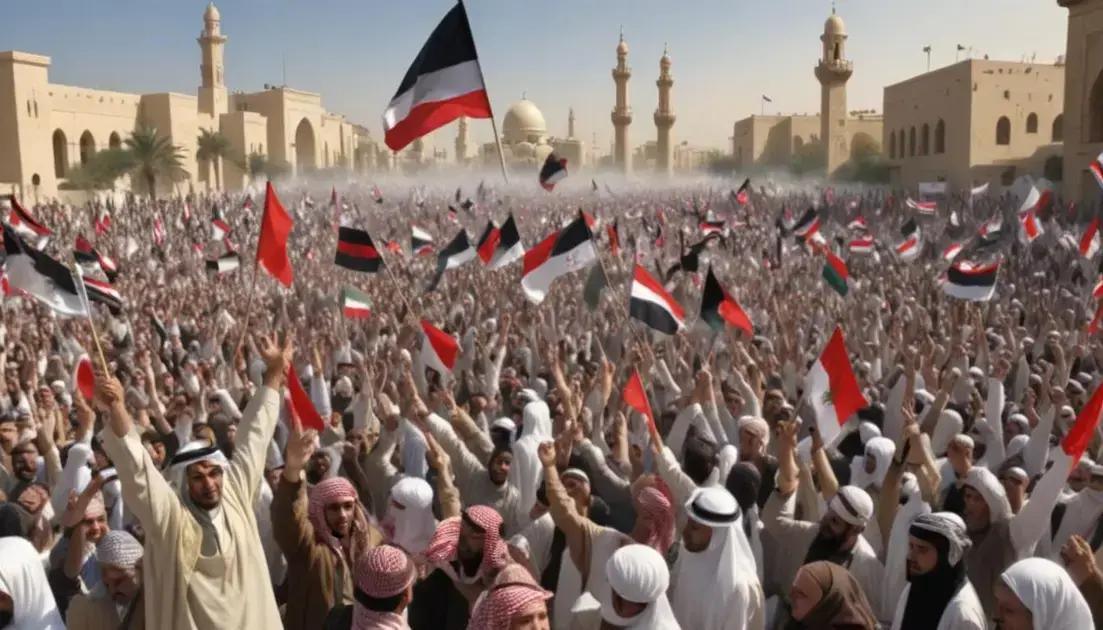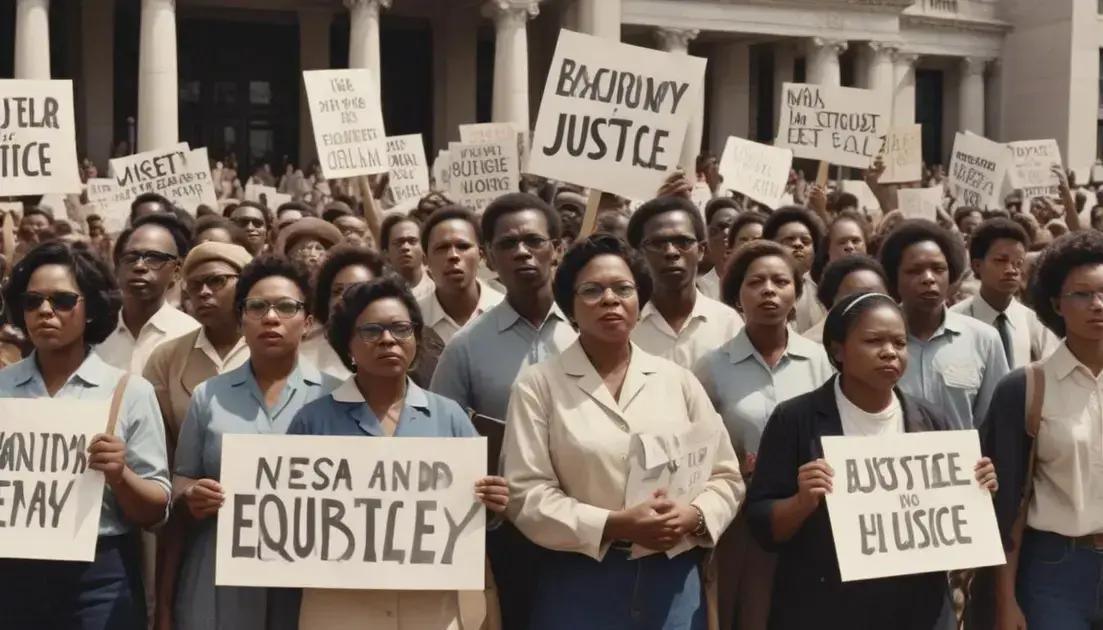
Arab Spring: How It All Began and Its Consequences in the Arab World
The Arab Spring began in 2010, igniting a wave of protests and uprisings across the Arab world. It started in Tunisia and quickly spread to countries like Egypt, Libya, and Syria, driven by demands for democracy, economic reform, and social justice. While some nations like Tunisia made strides toward democracy, others faced ongoing conflicts and violence, illustrating both the potential and challenges of popular movements. Key lessons emerged from this movement, emphasizing the importance of unity, clear goals, and the role of social media in mobilizing citizens. The Arab Spring continues to influence global discussions on freedom and rights.
The Arab Spring marked a pivotal moment in history, igniting protests that reshaped the Middle East. Discover how it all began…
Origins of the Arab Spring
The Arab Spring started in Tunisia in December 2010. A street vendor named Mohamed Bouazizi set himself on fire. This act was a protest against the police harassment and corruption he faced. His tragic decision sparked widespread protests across the country.
People took to the streets to demand change. They wanted more freedom and less corruption. Social media played a key role in spreading the news quickly. Videos and images of the protests went viral, inspiring others in the region.
Many Tunisians felt hopeful after the protests. They saw other movements rising in the Arab world. The spirit of revolution spread from Tunisia to countries like Egypt, Libya, and Syria.
In Egypt, massive protests occurred in Tahrir Square. Citizens called for the resignation of President Hosni Mubarak. Similar scenes played out in Libya, where Muammar Gaddafi faced a violent uprising.
The Arab Spring was not just about political change. It also included calls for economic justice and social equality. People wanted jobs, education, and better living conditions.
While the protests brought hope to many, the aftermath was complicated. Some countries saw civil wars and terrible conflicts. Others struggled to build new governments. The future of the region remained uncertain.
Key Events
Many important events marked the Arab Spring. Each played a role in shaping the movement. In January 2011, protests spread quickly from Tunisia to Egypt.
In Cairo, thousands gathered in Tahrir Square. They demanded President Mubarak step down. The protests lasted 18 days, showing the power of unity.
A week after Mubarak resigned, protests erupted in Libya. Citizens wanted to end Gaddafi’s long rule. This led to a brutal civil war.
Syria also saw massive protests. People called for an end to Bashar al-Assad’s regime. The government responded with violence, igniting a devastating conflict.
Throughout the region, people rallied for their rights. They wanted jobs, freedom, and better living conditions. Social media helped share updates and organize events.
While some countries found new beginnings, others faced more challenges. The outcomes varied widely across the Arab world. Each nation had its own unique story in the unfolding drama of the Arab Spring.
Consequences in the Arab World
The Arab Spring changed many countries in the Arab world. Some nations saw a rise in democracy. Others faced wars and instability.
In Tunisia, the movement led to free elections. Citizens were hopeful for a better future. New political parties emerged, reflecting diverse opinions.
Egyptian protests ended with Mubarak’s resignation. However, Egypt faced political turmoil. Military leaders took control, making it hard for democracy to thrive.
Libya was caught in a fierce civil war. Gaddafi was overthrown, but chaos followed. Different groups fought for power, causing much suffering.
Syria’s situation turned dire. The protests grew violent, leading to a brutal civil war. Millions fled the country, seeking safety abroad.
The Arab Spring also inspired movements beyond the region. People in other countries sought change and challenged their governments. It showed how powerful the will for freedom can be.
While some pockets of hope remained, the overall consequences were mixed. The Arab world faced many challenges as it moved toward an uncertain future.
Lessons Learned
The Arab Spring taught many important lessons. One key lesson is the power of people. When citizens unite, they can bring about change.
Another lesson is the need for clear goals. Movements without a solid plan may struggle. Successful protests often have specific demands.
Social media played a big role during the Arab Spring. It helped spread messages quickly. Activists used platforms to organize and share information. This showed how digital communication can empower movements.
However, the aftermath was complex. Countries must build strong systems after revolutions. Simply removing a leader isn’t enough. New governments need to ensure stability and security.
Trust among citizens is important, too. Without it, progress can falter. People need to feel safe and included in their new systems.
Finally, international support matters. Outside nations can influence outcomes, but they must be careful. Support should respect the sovereignty and wishes of the people.
Overall, the Arab Spring was a lesson in democracy, unity, and the challenges of change.
Current Implications
The Arab Spring still shapes many countries today. Its impacts can be seen in politics, society, and daily life. Some nations continue to struggle with the changes that started in 2010.
In Tunisia, officials are working to improve the economy. Citizens are hoping for better jobs and security. The country has moved toward a more democratic system, but challenges remain.
In Egypt, the situation is mixed. After several years of political instability, the military regained power. Many Egyptians continue to express their dissatisfaction with the current government.
Libya’s civil war has left deep scars. The country is divided between rival factions. Peace efforts are ongoing, but stability is still a distant goal.
Syria faces a humanitarian crisis. Millions remain displaced due to the ongoing conflict. Many families struggle to find food and shelter.
The Arab Spring also influenced young people. They are more politically aware and engaged. Many youth are active in advocating for change on social media.
Globally, the movement inspired protests and uprisings elsewhere. People across the world are talking about freedom and rights. These movements show that the desire for change crosses borders.
Conclusion
In conclusion, the Arab Spring has had lasting effects on the Arab world. It showed the power of people coming together to fight for change. While some countries found hope and new opportunities, others still face many challenges. Nations like Tunisia and Egypt are still navigating their paths toward stability and democracy.
We also learned that social media can play a big role in movements. It connects people quickly and spreads information widely. However, the importance of strong leadership and clear goals cannot be overlooked. Countries must focus on improving their systems to truly benefit their citizens.
Overall, the lessons from the Arab Spring inform us about the ongoing human desire for freedom and justice. People everywhere continue to seek a better future, and their voices matter. The story is far from over, and the implications of this movement will be felt for years to come.


